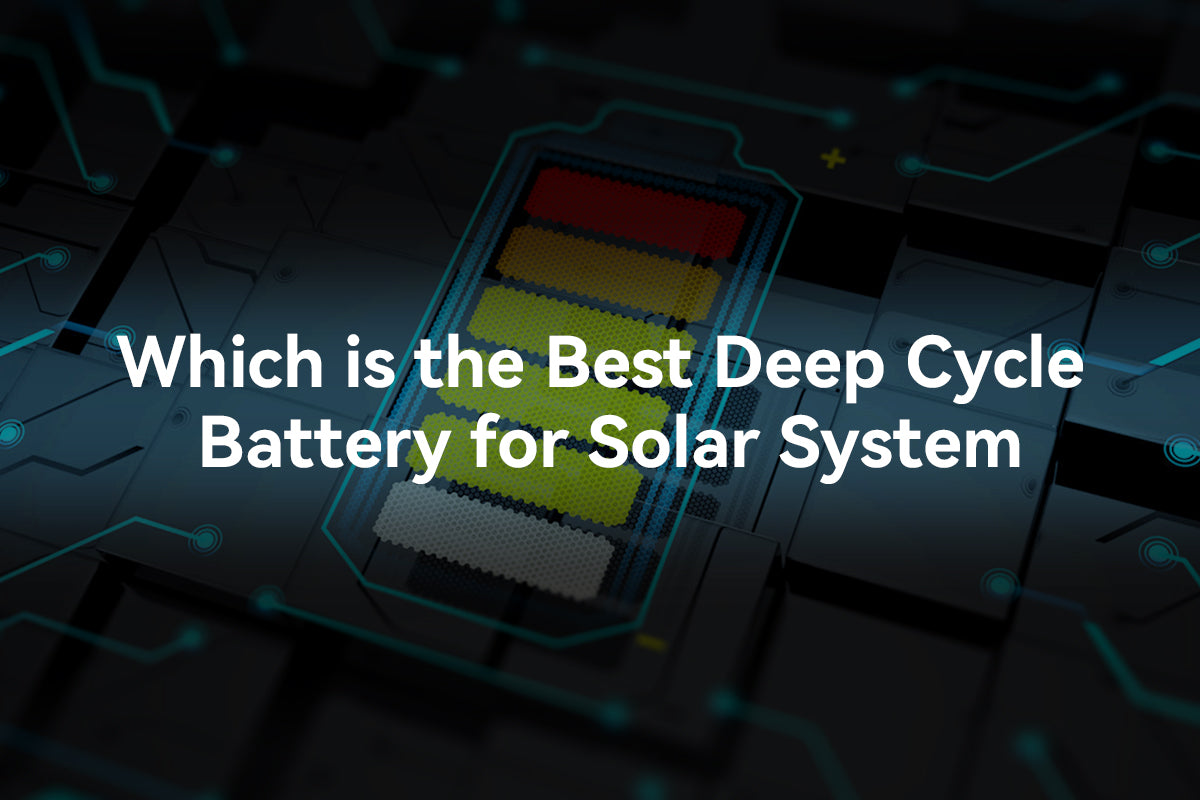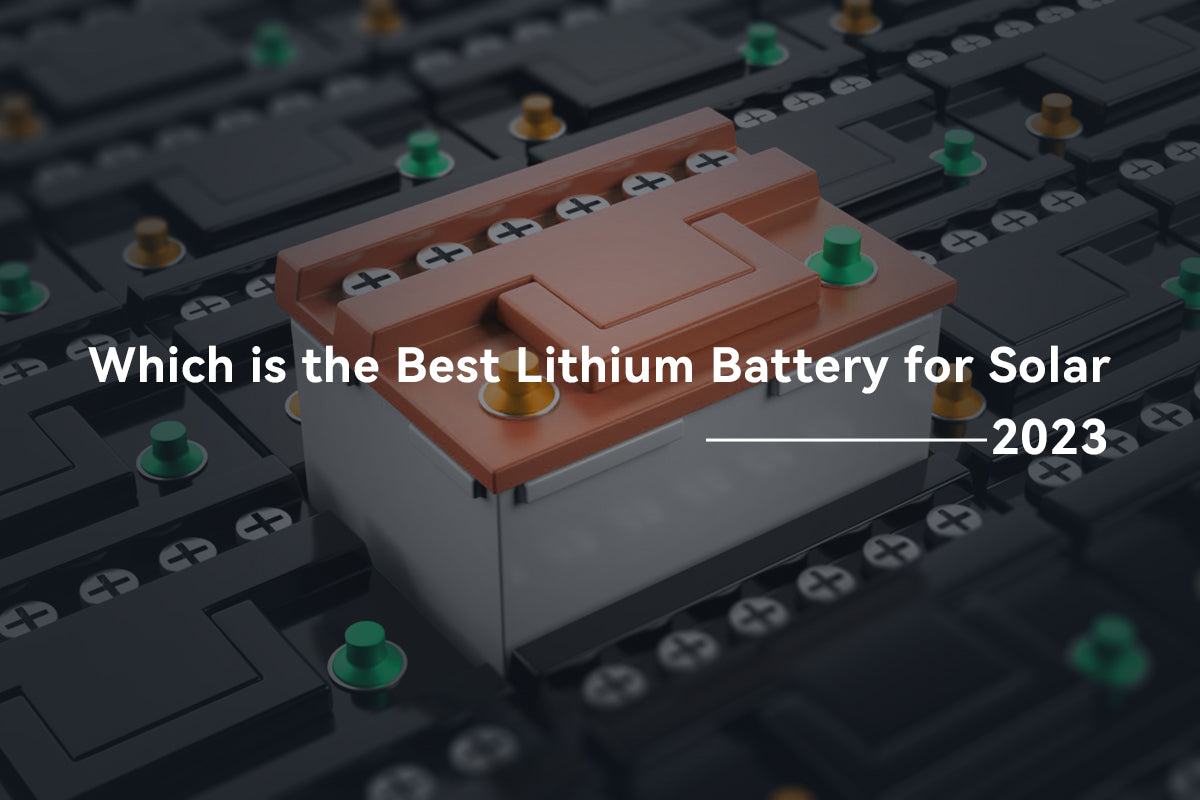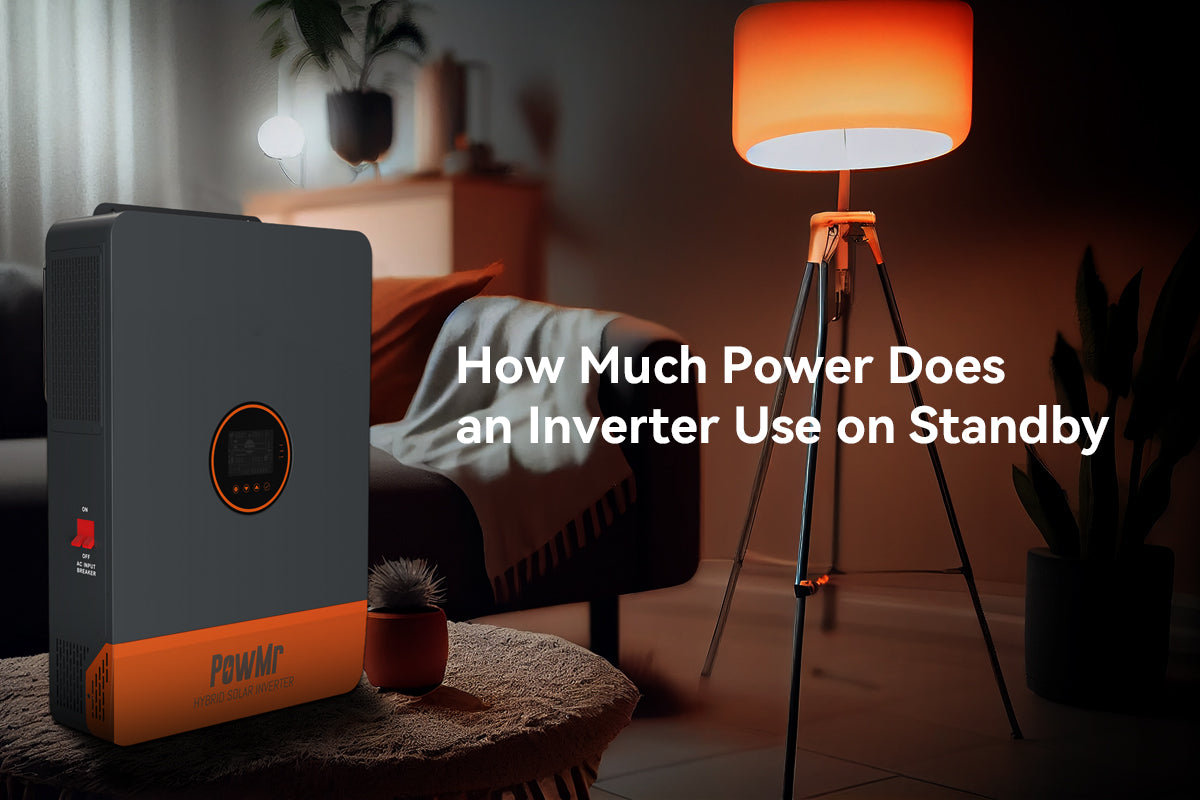For solar applications, lithium-ion batteries are generally considered the best type of deep cycle battery. This is because lithium-ion batteries offer high energy density, longer lifespan, and high efficiency, making them ideal for storing solar energy.
While lead-acid batteries are also commonly used in solar applications, they have some limitations, including lower energy density, shorter lifespan, and a slower charge and discharge rate.
Ultimately, the choice of battery for a solar application will depend on the specific requirements and budget of the project. There are many things need to carefully consider.
What is deep cycle battery
Deep cycle batteries usually can be discharged to a lower level (between 50% and 80% DOD) without damage, designed to discharge a large percentage of their capacity over a long period of time, and then be recharged again.
This makes them ideal for use in applications that require a steady and continuous power supply, such as in off-grid solar power systems, marine and RV applications, electric vehicles, and backup power systems.
What is the difference between a deep cycle and a regular battery?
Compared to a regular car battery, deep cycle batteries are able to withstand repeated deep discharges without damaging the battery or shortening its lifespan.
They are typically more expensive than car batteries but are designed to last longer and provide more consistent power over time.
What is depth of discharge
Depth of discharge (DoD) is a term commonly used in the context of batteries and refers to the percentage of the battery's capacity that has been discharged. For example, if a battery has a total capacity of 100 ampere-hours (Ah) and 50 Ah have been discharged, then the depth of discharge is 50%.
The depth of discharge is an important factor to consider when using batteries because it affects the battery's lifespan and performance. Generally, the deeper the discharge, the shorter the battery's lifespan will be. Therefore, for long term of battery power supply, deep cycle battery is more advisable. And it is recommended to avoid deep discharges and to recharge the battery before it becomes too discharged.
Types of deep cycle battery
The deep cycle feature is utilized in both lithium ion and lead acid battery technologies.
Lead-Acid Batteries
This is the most commonly used battery technology in solar energy systems. It is relatively inexpensive and has a good track record of reliability.
Lead-acid batteries are further divided into two types: flooded and sealed.
Flooded lead-acid batteries
Flooded lead-acid batteries are a type of rechargeable battery that use lead plates and an electrolyte solution of sulfuric acid to produce electrical energy.
These batteries are called "flooded" because the electrolyte solution is free to move around the battery cell, which can be problematic if the battery is not properly maintained or handled.
It's generally recommended to avoid discharging flooded lead-acid batteries below a DOD of 50% to prevent damage to the battery and ensure a longer lifespan.
Sealed lead acid batteries
These batteries are also known as valve-regulated lead-acid (VRLA) batteries.
They have a sealed design that prevents leakage of the electrolyte solution and requires minimal maintenance.
VRLA battery encompasses two subcategories: AGM and gel cell batteries.
-
Absorbent Glass Mat Battery
Absorbent Glass Mat (AGM) battery uses a special glass mat separator between the battery plates to absorb and immobilize the electrolyte. This results in a maintenance-free, spill-proof, and vibration-resistant battery.
In general, AGM batteries can typically be discharged to a depth of 50% to 80% of their rated capacity before recharging is required. -
Gel battery
They are often used in solar power systems, RVs, boats, and other applications that require a reliable and durable energy source.
Typically, gel batteries have a recommended maximum DOD of around 50% to 80%, which means that they should not be discharged below this level to avoid reducing the battery's overall lifespan.
Lithium-Ion Batteries
A lithium-ion battery is a rechargeable battery that uses lithium ions as its >primary active material. These batteries are widely used in portable electronic devices, electric vehicles, and solar energy systems.
They are more expensive than lead-acid batteries, but they require less maintenance and have a igher charge/discharge efficiency.
A common recommendation is to keep the maximum DoD to 80% or less to achieve a longer battery lifespan.
When selecting a deep cycle battery for a solar energy system, it's important to consider factors such as cost, efficiency, lifespan, maintenance requirements, and the specific needs of the system.
Different types of batteries have different recommended DoD limits, and exceeding those limits can significantly impact their performance and longevity.
What should I take in account when buying a deep cycle battery for solar
When buying a deep cycle battery for solar, there are several things you should take into account. Here are some important considerations:
-
Battery capacity
The battery capacity is measured in ampere-hours (Ah) and it indicates the amount of energy the battery can store. You should choose a battery with enough capacity to meet your energy needs. -
Voltage
The voltage of the battery should match the voltage of your solar panels and inverter. Most solar systems use 12V or 24V batteries. -
Battery type
There are different types of batteries available such as lead-acid, lithium-ion, and saltwater batteries. Each type has its own advantages and disadvantages, so you should choose the one that suits your needs and budget. -
Depth of discharge (DoD)
The depth of discharge indicates how much of the battery's capacity can be used before it needs to be recharged. A battery with a higher DoD will last longer and require less frequent charging. -
Cycle life
The cycle life refers to the number of times a battery can be charged and discharged before it loses capacity. A battery with a longer cycle life will last longer and require less frequent replacement. -
Temperature range
The battery's performance can be affected by extreme temperatures, so you should choose a battery that can operate in the temperature range of your location. -
Maintenance
Some batteries require regular maintenance such as checking the water level and cleaning the terminals. You should choose a battery that requires minimal maintenance.
By considering these factors, you can choose a deep cycle battery that will provide reliable and long-lasting power for your solar system.
FAQs about deep cycle batteries
How many deep cycle battery will I need
The number of deep cycle batteries you will need depends on the specific application and the amount of power required. To determine how many batteries you need, you will need to calculate your power requirements and estimate the amount of time you will need to run your application.
Here are the general steps you can take to estimate the number of deep cycle batteries you need:
-
Determine your power requirements
Calculate the total power consumption of all the devices or appliances you plan to run on your deep cycle batteries. This can be done by adding up the power rating (in watts) of each device and estimating the number of hours per day you plan to use them. -
Estimate the time you need to run your application
Determine the amount of time you need to run your devices or appliances each day, and then multiply by the number of days you plan to use the batteries between recharging. -
Calculate the battery capacity required
To calculate the battery capacity required, you need to multiply the total power consumption by the estimated time you need to run your devices or appliances. This will give you the total energy (in watt-hours) required. -
Determine the battery capacity per battery
Find the deep cycle battery that meets your application's voltage requirements and determine its capacity in ampere-hours (Ah). -
Calculate the number of batteries needed
Divide the total energy required (in watt-hours) by the battery capacity per battery (in ampere-hours) to determine the number of batteries needed.
Keep in mind that the above steps provide a general guideline, and the specific number of deep cycle batteries required will depend on the specific application and its power requirements.
Can I connect different types of battery together
In general, it is not recommended to connect different types of batteries together because they have different characteristics such as voltage, capacity, and chemistry. Connecting different types of batteries together can cause a number of issues, including:
-
Uneven discharge
Different types of batteries have different discharge curves, meaning they discharge at different rates. If you connect batteries with different discharge curves together, one battery may discharge more quickly than the other, leading to an uneven discharge. -
Overcharging
Different types of batteries have different charging requirements. If you connect batteries with different charging requirements together, one battery may be overcharged while the other is not fully charged. -
Damage to batteries
Different types of batteries have different chemistries, and mixing chemistries can be dangerous. Connecting batteries with different chemistries together can cause damage to the batteries, and in some cases, it can even result in a fire or explosion.
In short, it is generally not recommended to connect different types of batteries together. If you need to use multiple batteries, it is best to use batteries of the same type, with the same specifications, and from the same manufacturer.
How long does a deep cycle battery last
This issue can be discussed in terms of battery lifespan and run time, which depend on several factors, such as its chemistry, usage patterns, maintenance, and temperature conditions.
Lifespan
The lifespan of a deep cycle battery is usually measured in cycles, which refers to the number of times it can be discharged and recharged before it reaches the end of its useful life.
The actual lifespan can vary widely depending on the battery's chemistry, construction, and usage conditions.
For example, lead-acid batteries typically last between 300 and 800 cycles, while lithium-ion batteries can last up to 2000 cycles or more.
Run Time
The run time of a deep cycle battery depends on its capacity and the load it is powering. The capacity is measured in ampere-hours (Ah), which refers to the amount of current the battery can supply over a certain period.
The run time of a deep cycle battery depends on its capacity and the load it is powering. The capacity is measured in ampere-hours (Ah), which refers to the amount of current the battery can supply over a certain period.
For example, a 100Ah battery can theoretically provide 1 amp of current for 100 hours or 10 amps for 10 hours.
However, the actual run time can vary depending on the load's power consumption, the battery's state of charge, and other factors such as temperature and age.
Is deep cycle battery best for solar system?
Deep cycle batteries are different from regular car batteries, which are designed to provide a burst of energy to start an engine but are not designed to be deeply discharged and recharged repeatedly. In contrast, deep cycle batteries are designed to provide a steady, long-term supply of power, making them ideal for applications where the battery will be cycled regularly, as is the case in solar systems.



